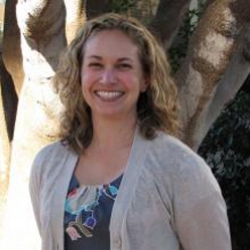
Kate Hamel
The research goal of the MAREY lab is to better understand how humans maintain balance and control locomotion during activities of daily living with the hope of ameliorating the declines in health that occur when these systems are not functioning properly. We have examined the biomechanics of gait and balance in infants, children, athletes, older adults and patients with pathology and have explored how these populations are able (or unable) to maintain upright postural control and safe gait patterns under a variety of challenging environmental conditions. My broad interdisciplinary background in Engineering, Kinesiology, Biomechanics and Gerontology has led to my current research program which is primarily focused on age-related changes in sensory systems and cognitive processes and how these changes impact the biomechanics of gait and balance in older adults. The long-term goal of my research program is to design better interventions to improve gait, balance and mobility and prevent falls in our older population.
The MAREY lab was named for Etienne Jules Marey, the French scientist who pioneered field of cinematography laying the ground work for much of the instrumentation that we use in biomechanics today. We conduct state-of-the-art research in the areas of biomechanics, motor learning and development, motor control, visual perception, gerontology and rehabilitation and provide SF State students with the opportunity for high quality research training experiences. The lab is an approximately 1000 sq ft space equipped with a 10-camera Vicon motion capture system, two Bertec force platforms, one Kistler portable force plate, a custom staircase with seven instrumented stairs, two ASL head-mounted eye-tracking systems and a Noraxon EMG system. Additionally, we have several computer stations for data analysis equipped with Visual 3D, Matlab and statistical software for data analysis.
Selected Publications
- Hamel, K.A., Ross, C.*, Schultz, B.*, O’Neill, M.*, Anderson, D.I.: Older Adult Alexander Technique Practitioners Walk Differently Than Healthy Age-Matched Controls. In press: Journal of Bodywork and Movement Therapies, 2016.
- O’Neill, M.*, Anderson, D.I, Allen, D., Ross, C.* and Hamel, K.A.: Effects of Alexander Technique training experience on gait behavior in older adults. Journal of Bodywork and Movement Therapies 19(3), pp 473-81, 2015.
- Loverro, K.*, Mueske, N.*, Hamel, K.A.: Effects of locomotor task and marker placement on minimum foot clearance. Journal of Biomechanics 46(11), pp 1842-1850, 2013.
Teaching
- Kin 480 Anatomical Kinesiology
- Kin 437/737 Physical Dimensions of Aging
- Kin 680 Quantitative Analysis of Human Movement
- Kin 730 Advanced Biomechanics
- Kin 736 Advanced Neuromotor Control